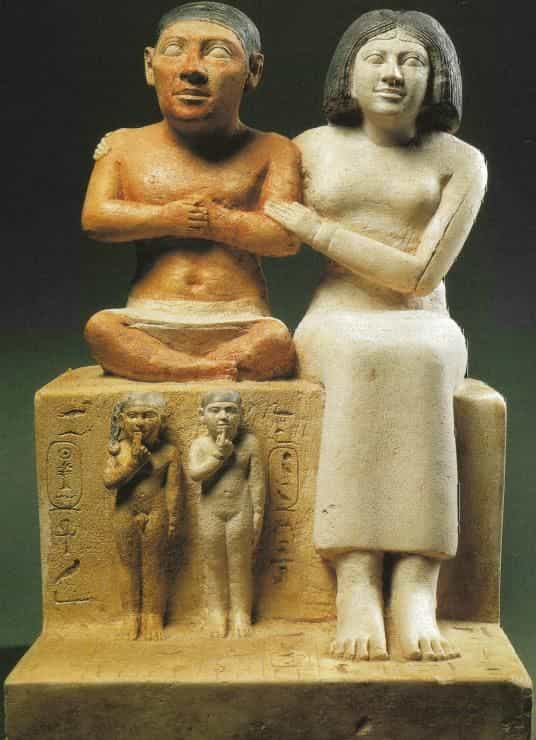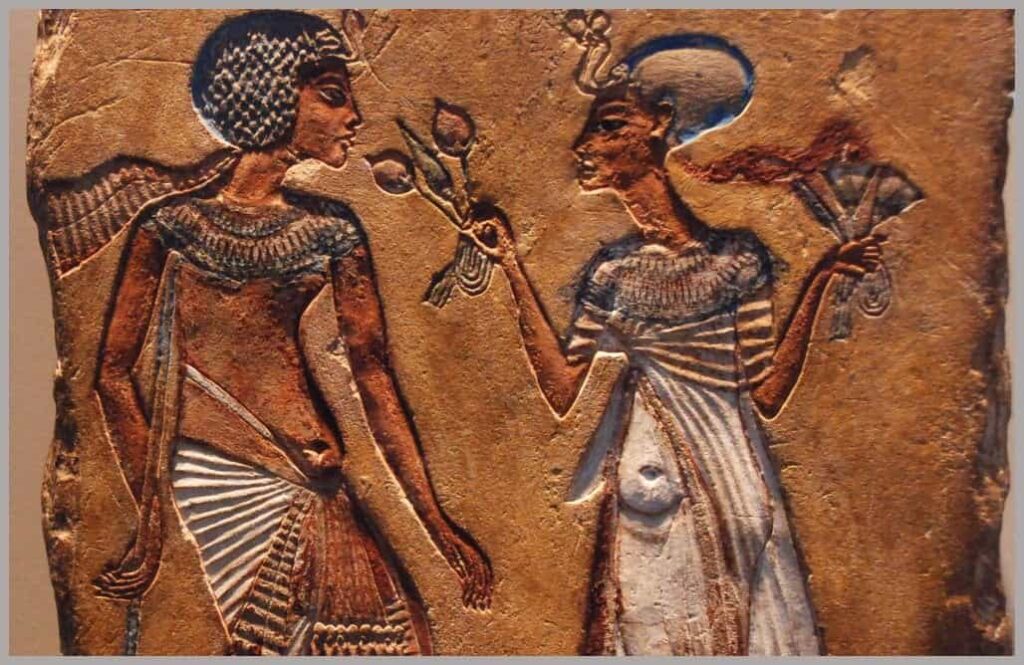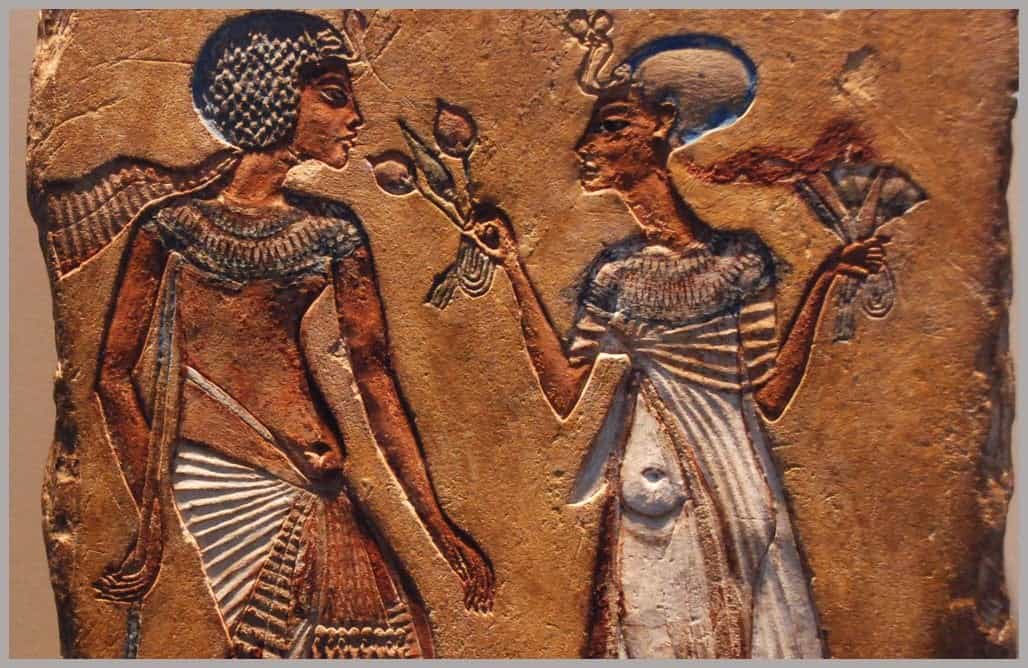In this article we are going to get a little closer to the love life in ancient Egypt. We cannot approach an ancient society from a current perspective, but rather we have to put aside the prejudices that are imposed on us from our own perspective. If we do it this way, we will discover that the loving freedom of ancient Egypt is worth knowing.
” Take a wife when you are young, so that she may give you a child. She must give birth for you while you are young, the world must be populated. The man with a large family is happy, he is admired for his offspring “
This is one of the teachings that a scribe from Nefertari‘s palace, Any, gives to young people in order to lead a prosperous and happy marriage.
Like this one, we can find many more teachings and advice that the older ones try to instill in the younger ones, since marriage was one of the pillars of Ancient Egyptian society.
Marriage in ancient Egypt
In Ancient Egypt, marriage did not require a ceremony to formalize it, nor were judicial or religious procedures required to carry out a marriage union, but the marriage bond was established when two people were going to live together and wanted to form a family.
Since marriage was a foundation in Egyptian society, adult Egyptians used to always be related, since it is firmly believed that the role of men is to marry and create a family.
The normal thing was that men married at the age of twenty, although if they were from a wealthy family, it could wait until a later age, since the young man had to finish his professional training.
Women, used to marry at the beginning of puberty, with approximately fourteen years. The couple used to meet before the engagement, proof of this are the fifty love songs that we keep from the New Kingdom.
In them you can see the desire of lovers, always in a delicate and sensitive way, although we can also find it in some reliefs, sculptures and papyri referring to the erotic theme.
Normally the marriage between stepbrothers and cousins was not badly considered, but sometimes marriages with a direct line of consanguinity were banned, with the exception of the royal family.
Furthermore, the ancient Egyptians normally only had one wife, as few could support more than one, although the pharaoh could have as many wives as he wanted.
Marriage was symbolized by the giving of a ring, a symbol of eternity. The act of marriage took place when the bride moved her belongings to her new home.
The day before, the bride received the women around the groom who adorned her with henna and body paint. The groom was visited by other men in the company of whom he spent the night singing and dancing.
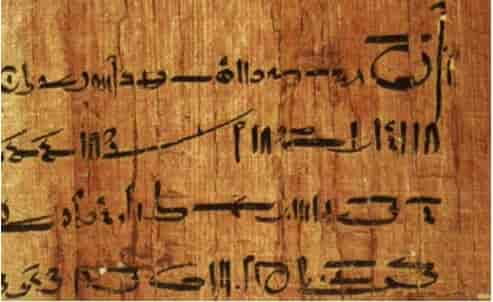
Marriage in ancient Egypt: Wedding day
“On the wedding day”, that is, the day of the transfer, the woman wore a long tunic and the groom a short one, usually blue, a color that symbolized eternity, although the wealthier classes used to marry in white.
That day, the couple signed the marriage contract, which began to be used from the 9th century BC and consisted of a document with the date, the contracting parties, the future spouses, the name of the parents of the spouses, the husband’s profession and the name of the witnesses.
This document was signed in the presence of a priest of the temple who registered it, but no type of ceremony was celebrated, legal or religious, simply with the fact of starting to live together, it was assumed that these people were already married.
Although there was no such ceremony, At dusk a party took place in which the wife was led to her husband’s house with music and songs and as a symbol of fertility, rice was thrown in her path. Then there was a banquet that lasted well into the night.
When the woman married, she kept her name, to which was added “wife of X”, she maintained her independence, and she could even have her own trade or business.
Divorce in ancient Egypt
When the divorce took place, for a cause other than the adultery of the wife, she received compensation from the husband, since the woman was financially dependent on him.
To get a divorce it was enough to stop living together, and both could remarry again if they wished. Like marriage, it was something between the two spouses, divorce did not require legal recognition, as it was a private decision.
This could be requested by the man or by the woman. There could be different reasons that caused the separation, such as the sterility of the woman, or adultery, (which in case of having been involved by women, could have very rigid legal, moral and religious consequences) not so much if it was produced by the husband.
But there were also cases of divorce by mutual agreement, where personal interests and feelings were put forward, and they were accepted without further explanation.
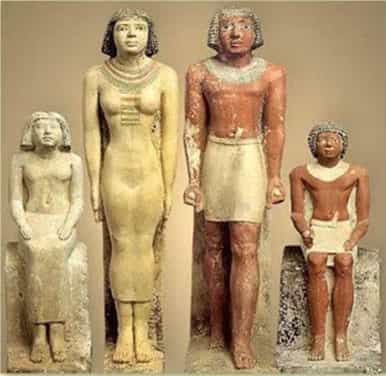
First photo: Amenemope was a royal scribe. He sits on a claw-footed chair with his wife, Hathor, who is seated on a low stool (on a pillow). They embrace each other. Painted wood. From Tomb 265 (TT265) at Deir el-Madina, Western Thebes, Egypt. New Kingdom, 19th Dynasty, reign of Seti I/Ramesses II, 1290-1213 BCE. It is on display at the Neues Museum, Berlin, Germany.
Read more. Egyptian Atlantis: The submerged palace of Cleopatra, the last queen of Egypt


